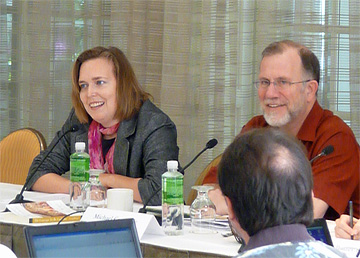I’ve been thinking recently about corporate culture. If you’re not familiar with this phrase, let me explain that corporate culture has to do with the basic identity and personality of an organization (business, church, family, school, etc.). Corporate culture, or organizational culture, as it is sometimes called, profoundly shapes the life of the entity and the people it comprises.
My interest in corporate culture led me to a book by Edgar H. Schein: The Corporate Culture Survival Guide: New and Revised Edition. Schein is the Sloan Fellows Professor of Management Emeritus at the MIT Sloan School of Management. An organizational psychologist by training, Schein has published extensively in several fields related to organizations and business.
In case you’re wondering, I did not choose this book because I am fighting for survival within any of the organizations of which I am a part. But I am working with several people from Foundations for Laity Renewal, the parent organization of Laity Lodge, where I work, in an effort to understand our corporate culture and values. This reflects an effort on the part of our leaders to become even more effective in the effort to fulfill our core purpose: to serve God by creating opportunities for people to encounter God for the transformation of daily life, work, and our world.
I chose Shein’s book because it addressed my curiosity directly, because it was positively reviewed in a variety of publications, and because it was written by someone whose credentials were impressive to me. So far, I’m glad I made this purchase. The book is clear and straightforward, with intellectual mettle but not much technical jargon.
Today, I thought I might share with you some excerpts from Schein’s book:
In order to manage culture, you must understand what culture is, what content culture covers, and how to assess it. It is dangerous to oversimplify this concept because of the illusion that one is managing culture when one is, in fact, managing only a manifestation of culture and, therefore, not achieving one’s change goals. (Kindle Location 187)
When new leaders take over existing organizations, they find that the existing culture defines what kind of leadership style is expected and accepted, based on past history and the beliefs, values, and assumptions of earlier leaders. (KL 211)
The leader’s role in evolving the culture is complicated by the fact that, as organizations grow and mature, they not only develop their own overall cultures, but they also differentiate themselves into many subcultures based on occupations, product lines, functions, geographies, and echelons in the hierarchy. In some organizations the subcultures are as strong as or strong then the overall organizational culture. Leaders thus must not only understand the cultural consequences of the many ways in which growing organizations differentiate themselves but, more importantly, must alight the various subcultures that have been created toward a common corporate purpose (KL 231).
If you’re a leader in any organization, including your family or your soccer team, these thoughts are well worth your consideration. More later . . . .

